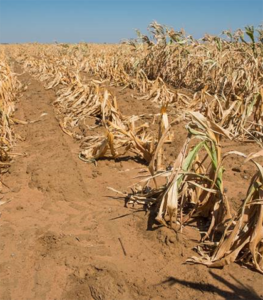Climate change the leading driver of migration – new study
Climate change has become the leading cause of migration, according to a ground-breaking new study.
The research by a team at New Zealand’s University of Otago found that the effects of climate change, including floods and extreme temperatures, have become more important push factors in migration than economic inequality or conflict.
The study examined migration data from 198 countries of origin to 16 member states of the Organization for Economic Cooperation and Development (OECD) between 1980 and 2015.
It found that migration increased after floods and extreme temperature events.
Published last month in the journal ‘Global and Planetary Change’, the research also found that this migration happens in stages.
Lead researcher and economist Dr Dennis Wesselbaum said that migration actually decreased for around five years after a temperature anomaly, before increasing for the next 20 years.
“One explanation is that people move to places further away and have to save more money to finance migration cost, or that it takes time to identify the temperature shock,” Dr Wesselbaum said.
Another reason for the apparent delay is that people at first try ‘in-situ adaptation’, researchers say.
They found that global temperatures increased by an average of 0.8 degrees Celsius in the study period. They counted 100 weather-related disasters in 1980, but by 2015 this number had risen to 300 a year.
Around 244 million people – 2.8 per cent of the world’s population – were classed as migrants in 2015 by the UN.
But the UN has said it will not define climate migrants as refugees, a status that comes with more international support, because of fears supports program for those fleeing violent conflict will be watered down.
A report published last year by the UNFCC, the UN’s climate change body, found most countries are failing to deal with climate migration adequately.
But Dr Wesselbaum says he is confident that the problem will be recognised “sooner or later”, saying that the results of his study offer a more nuanced understanding of how people respond to climate shocks.
The climate migration model showed that migration remained stable after storms and drought, but increased significantly after floods and extreme temperature events.
“Both developed and at-risk countries need more planning and policy to prepare for what is likely to be a growing trend of people wanting to move,” Dr Wesselbaum said.
His team developed a model to understand the causes of migration, divided into effects of climate change, economic performance and political strife.
The model showed that rising temperatures and a growing number of weather-related disasters now cause more migration than lack of income or political freedom.
Each 10 per cent increase in temperature in an origin country caused an increase of 3 per cent in migration from that country to the 16 destination countries, which included Australia, Italy, Spain and Germany.
A raft of other research shows that the poorest countries and communities are most vulnerable to the effects of changing temperature and weather patterns.
A study published last year in the journal ‘Nature’, predicted that 200,000 people living on the coast of Bangladesh will be forced to migrate inland because of rising sea levels and increasing soil salinity.
While farmers have largely adapted to the frequent floods that the country experiences, rising salinity poses a new set of challenges for rural communities, the research said.
Sub-Saharan Africa is also vulnerable to the effects of climate change, especially in regions like the Sahel – the band of land between the Sahara and the Africa’s savannah – due to its dependence on agriculture, poor infrastructure, high poverty rates and weak institutions.
Senegal, for example, has seen a 50-100 per cent reduction in crop yield and grazing areas over the last five years, causing significant increases in food prices.
Rural migration into urban areas has been increasing since the famines of the 1970s and the trend has continued in response to droughts and land degradation; and other countries in the Sahel have experienced similar trends.
In Mali, for example, 80 per cent of internal migration was due to rural inhabitants moving to urban areas. Migration is particularly attractive to those living in Mali’s arid north. The south, where weather patterns are more favourable for agriculture, often receives migrants from the north.
Human migration presents a complex set of problems. As the University of Otago study points out, in addition to movements related to climate change, people also move for economic and political reasons, perhaps to seek higher incomes or to avoid conflict.
As climate change continues to put pressure on food and freshwater, however, vulnerable populations will be increasingly compelled to seek refuge in urban centres and abroad.












